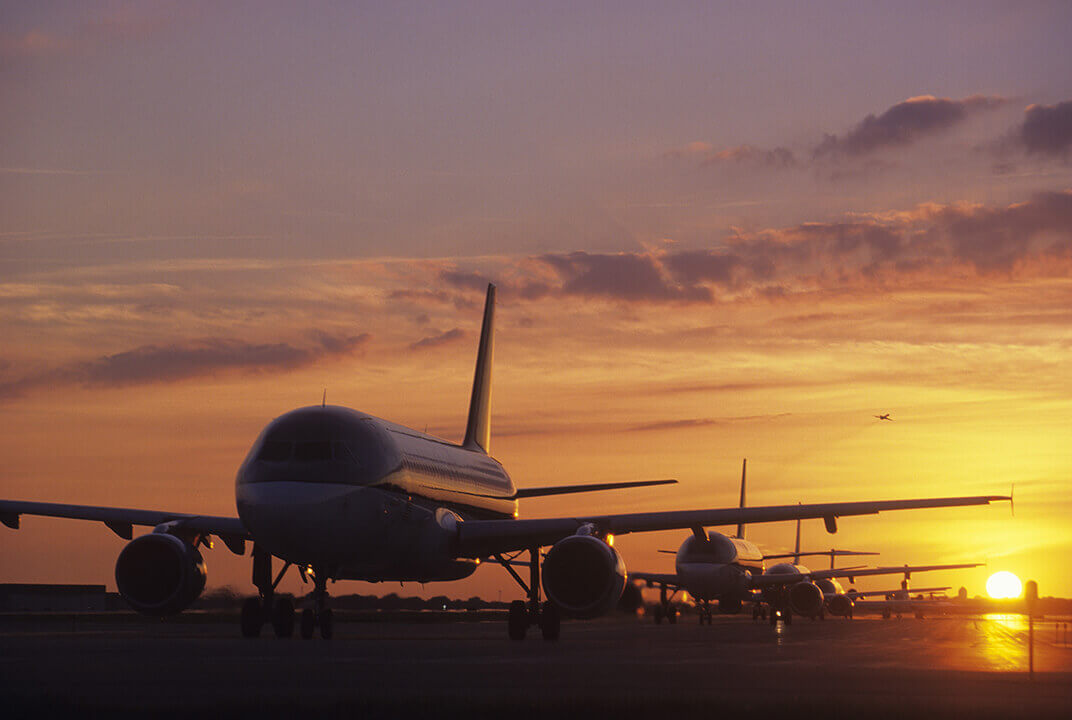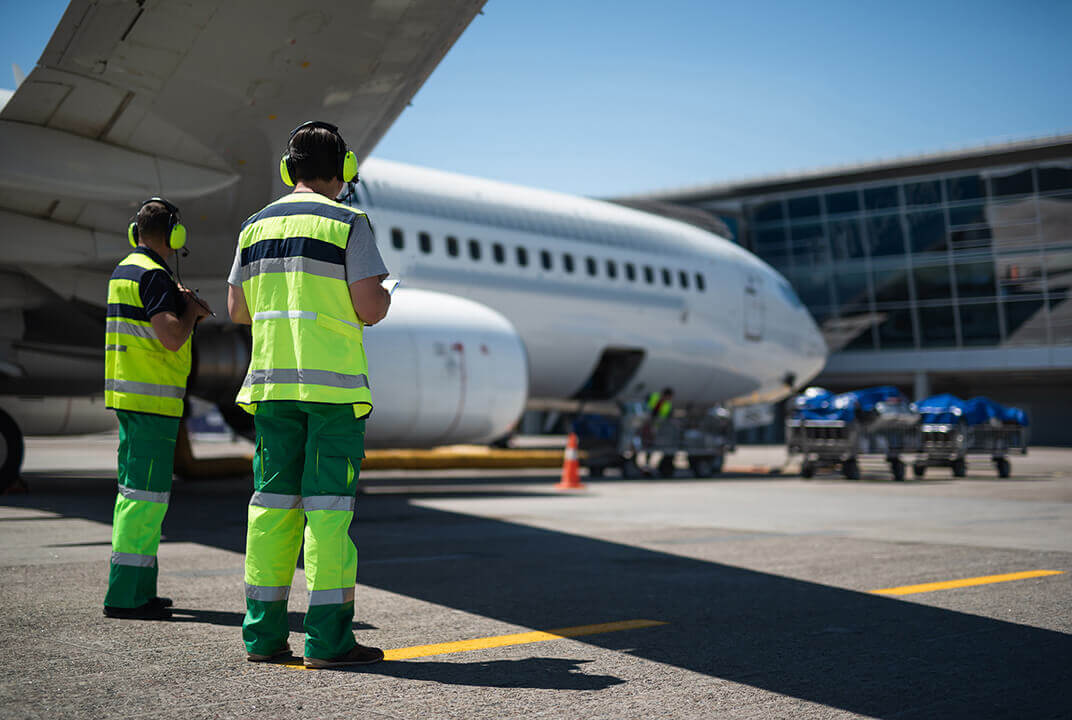New study shows satellite communication saved airlines US$3 billion thanks to improved air traffic control and operational efficiencies
Voice and data links to the flight deck via satellite provide time savings for passengers and reduce environmental impact of air travel, according to new Helios study
Satellite communication (satcom) in the cockpit has saved airlines more than US$3 billion thanks to safety and efficiency benefits, according to a study released today by Helios and Inmarsat (ISAT.L).
Satcom is the use of voice and data services via satellite to communicate with aircraft outside the range of conventional ground radar and Very High Frequency (VHF) stations, such as over oceanic regions. It is typically used for air traffic control and airline operations. The inaugural study, conducted by Helios, valued the benefit of satcom to airlines between 2001 and 2016.
It found that one single Air Traffic Control (ATC) benefit mechanism – reducing separation minima, which allows aircraft to fly closer together safely – was responsible for savings of US$890 million alone. Thanks to satcom, planes can now fly within 30 nautical miles of each other because of safe, reliable communication and tracking; previously aircraft were required to maintain a separation of 100 nautical miles. This allows aircraft to fly closer together and means more planes can fly in a given airspace, which is particularly beneficial over the busy skies of the North Atlantic. If an aircraft is not equipped with satellite communication capability, it must maintain the 100 nautical mile separation, and is not permitted to fly in certain areas.
Increasing airspace capacity also leads to more aircraft being able to choose optimum flight levels, saving time and fuel.
The US$890 million saving is a major part of the US$1.1 billion total ATC saving identified by the study. Other benefits that satcom provides to ATC include:
- Individually-tailored flight plans that save time and fuel
- Dynamic Airborne Reroute Procedure, which allows airborne rerouting of aircraft when data indicates a more efficient route is available, for example due to a change in weather conditions
- Tailored arrivals, where arrival times are planned to allow an ideal descent route and to avoid holding patterns
- Procedures in some oceanic regions to allow aircraft to climb or descend through an altitude that is already occupied by another aircraft
A further US$1.9 billion is saved thanks to the ability of aircraft to communicate with their Airline Operations Centre (AOC). AOC applications use real-time information to help airlines improve flight safety or provide a more efficient service at a lower cost. Delay management and scheduling is improved, fleets and flight crew can be better managed, maintenance can be taken care of and turnaround time on the ground is reduced.
Traditionally AOC communication is provided by the exchange of simple text messages between the pilot and the controller. As satcom bandwidth capacity increases, bringing broadband connectivity to the cockpit, there will be an explosion of IP-based AOC applications, allowing airlines to further optimise flight operations and fleet management. For example, an aircraft’s health can be constantly monitored, and any maintenance issue signaled ahead to the ground crew so parts and maintenance staff are ready as soon as the aircraft lands. Until now, most maintenance information was delivered upon landing, with potential for delaying speedy resolution of an issue.
Broadband connectivity will also help with urgent ATC demands, as our skies see ever more traffic. By 2030, there will be more passengers in the sky each year (7 billion) than there are people on the ground right now. They will fly in 40,000 aircraft, the majority of which will be connected.
The Helios study looked at benefits over oceanic regions, but it also highlights how satcom can complement existing ground-to-air data communications over land too. Savings over continental regions could equal those over the oceanic regions. For example, in the congested airspace of Europe, the Iris Precursor project has been established by the European Space Agency with support from Inmarsat and other aviation companies. It uses satcom to allow precise ‘4D’ flight path control, which optimises flight speed and descent profiles. It is designed to dramatically reduce delays, particularly around large hubs.
Nick McFarlane, Managing Director at Helios, said: “This is the first time that the benefits of satellite communication have been quantified and the results are astounding. The technology has already delivered huge benefits to the industry and emerging applications mean the trend is set to continue, in fact it is set to accelerate.”
Captain Mary McMillan, Vice President of Safety and Operational Services at Inmarsat Aviation, said: “This study shows how satellite communication has already done so much to improve the safety and efficiency of the skies. With the arrival of IP-based applications and new data-hungry cockpits, secured satcom enables cloud-computing and sensor fusion and delivers a step-change in critical safety data, as well as improved operational performance of today’s fleets. The potential to enhance the safety and efficiency of air travel is unlimited.”
Inmarsat pioneered cockpit data with the launch of Classic Aero back in 1990 and is today the leading service provide with 95 per cent market share. SwiftBroadband-Safety, its new IP-based broadband platform for the flight deck, brings aircraft connectivity to new levels. Always-on, always-secure high-speed broadband in the cockpit delivers much faster communication and a host of new safety and efficiency applications.
Further information
NOTE: A copy of the Helios study can be downloaded here
What is Satellite Communication:
Satellite Communication (satcom) is a voice and data service allowing aircraft to communicate with Air Traffic Control (ATC) and its Airline Operation Centre (AOC) when outside coverage of conventional ground radar and VHF stations.
About Inmarsat
Inmarsat plc is the leading provider of global mobile satellite communications services. Since 1979, Inmarsat has been providing reliable voice and high-speed data communications to governments, enterprises and other organizations, with a range of services that can be used on land, at sea or in the air. Inmarsat operates in more than 60 locations around the world, with a presence in the major ports and centres of commerce on every continent. Inmarsat is listed on the London Stock Exchange (ISAT.L).
The Inmarsat press release newsfeed and corporate updates are on @InmarsatGlobal.
Inmarsat Aviation
Robeel Haq
+44 (0)20 7728 1352
robeel.haq@inmarsat.com
Inmarsat Corporate Communications
Jonathan Sinnatt/Mary Whenman
+44 (0)20 7728 1935/1492
press@inmarsat.com
About Helios
Helios is the aviation consultancy of Egis, delivering management consultancy, strategy, investment and technical advice across the globe. Combining analytical rigour, strategic context and creativity, we bring independence and insight to every opportunity we address. We are ISO 9001 certified, with offices in the UK, Slovakia and United Arab Emirates.
Our parent company, Egis, is an international group headquartered in Europe, with over 13,000 employees and a turnover of €1 billion. Egis also operates 14 international airports.
With a worldwide reputation for excellence and integrity, our multinational aviation team provides a compelling offer that encompasses consultancy and engineering services to ATM, institutions, airports and aircraft stakeholders.
Helios
Sian McCart
+44 (0)1252 451 713
sian.mccart@askhelios.com

